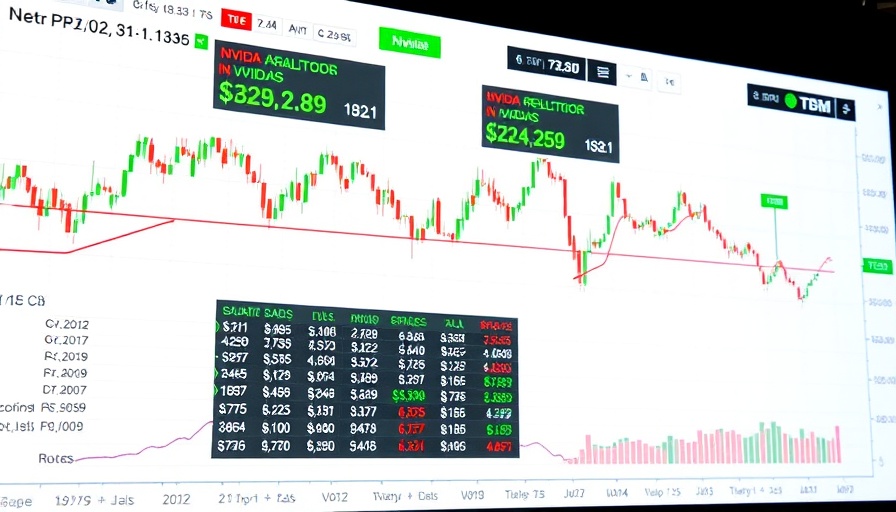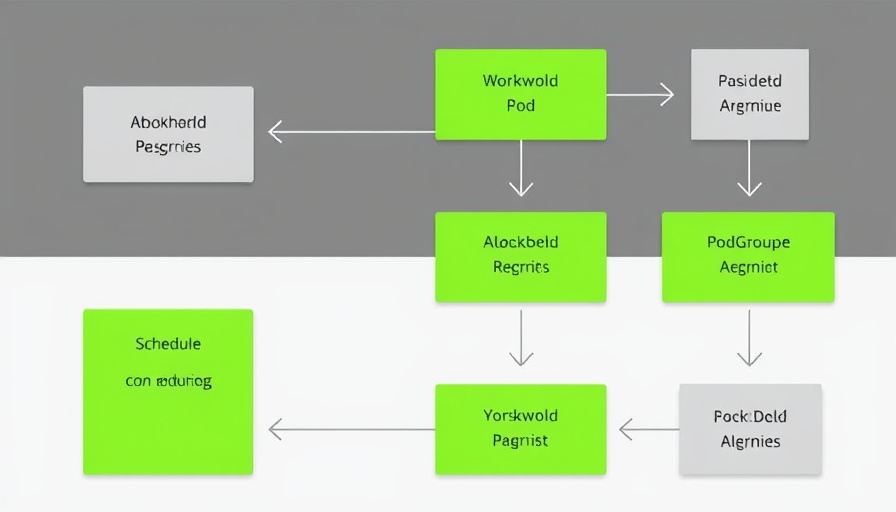
The Shift in Nvidia's Stock Performance
Nvidia (NASDAQ: NVDA) has faced a rocky start to 2025, with its stock down approximately 9% year-to-date. Despite its previous position as a leader in AI-related semiconductor manufacturing, challenges such as macroeconomic uncertainties and competition from upstarts in the AI space have led to investor caution.
Understanding the Current Market Dynamics
Factors affecting Nvidia's performance include recent market entries like DeepSeek, which have intensified competition. In addition, potential further restrictions on exports to China could impact Nvidia's profitability, with estimates suggesting a significant hit of about $10 billion to sales and 30-40 cents to earnings per share if offsets aren't met. Despite these concerns, the upcoming GTC (GPU Technology Conference) is anticipated to be a spark for investor interest, showcasing Nvidia’s path forward.
The Catalyst of the GTC Conference
Set for March 17–21, the GTC will be a pivotal moment for Nvidia investors. Analysts, including Vivek Arya from Bank of America, see the conference as an opportunity for Nvidia's CEO Jensen Huang to unveil future strategies, specifically addressing recovery in gross margins that are expected to reach mid-70s% by the latter half of the fiscal year. These margins are essential indicators of the company’s pricing power and cost management.
Expectations for Gross Margins
During Nvidia's prior product cycles, gross margins soared to near-record highs due to optimal supply chain conditions and expedited shipments. However, with the transition to the new Blackwell architecture, Nvidia faces cost pressures that have brought margins down to around 71%. The market is eagerly watching for signs of stabilization and growth in margins, which will be pivotal in determining Nvidia's competitive edge moving forward.
Nvidia's Competitive Edge in GPU Technology
Importantly, Nvidia maintains a commanding lead in the GPU market despite the encroaching threat of custom chip alternatives. Arya notes that Nvidia's platform is expected to retain approximately 80-85% of market share even as competition heats up from ASIC manufacturers. This ongoing dominance will be crucial, particularly as the demand for advanced AI solutions continues to grow.
Future Insights and Investor Outlook
Analysts paint a bullish picture for Nvidia with an average price target of $177.23, indicating about a 46% upside potential over the next year. With 39 out of 42 analysts recommending a Buy, market sentiment appears largely optimistic. Arya himself has rated Nvidia as a Buy with a target price of $200, suggesting that current valuation levels offer a compelling opportunity for investors looking to capitalize on market recovery.
Tuning In to AI Opportunities
The relevance of Nvidia extends beyond just stock performance; it’s at the heart of a technological revolution as AI continues to permeate various industries. The outcomes from GTC will likely indicate Nvidia's strategic direction, shedding light on the broader AI total addressable market (TAM) and the sustainability of its growth beyond 2026. Such insights will be crucial for AI enthusiasts and investors alike as they consider the long-term implications of ongoing developments in AI technologies.
Conclusion: Time to Invest in AI's Future?
As we approach the GTC, investors and AI enthusiasts alike should reflect on both the risks and opportunities associated with Nvidia’s current landscape. With compelling prospects on the horizon, this could be an ideal time to explore investment opportunities in what remains a pivotal frontier of technological advancement.
 Add Row
Add Row  Add
Add 




 Add Row
Add Row  Add
Add 

Write A Comment